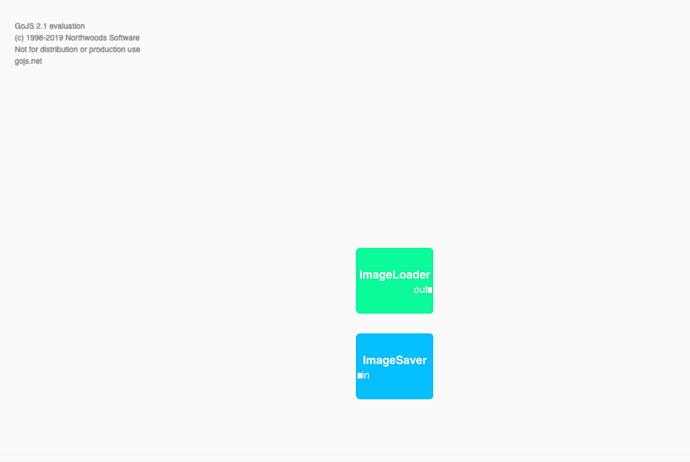Hello!
I am currently applying a location to a new node and I’ve tested and logged the locations and it is getting and saved to the diagram in location/loc but on the diagram it self, the node is not at the location set.
For testing purposes I set static locations with:
> diagram.model.addNodeData({
> location: new go.Point(100,0),
> text: event.dataTransfer.getData('text'),
> })
I’ve tried different points such as (0,100),(0,0),(50,50) and they all set the node on the bottom right of the diagram.
My diagram is defined as below:
> const myDiagram = $(go.Diagram, this.$el, {
> layout: $(go.TreeLayout, {
> angle: 0,
> arrangement: go.TreeLayout.StyleLayered
> }),
> 'undoManager.isEnabled': true,
> 'linkingTool.isUnconnectedLinkValid': true,
> 'linkingTool.portGravity': 20,
> 'relinkingTool.isUnconnectedLinkValid': true,
> 'relinkingTool.portGravity': 20,
> 'relinkingTool.fromHandleArchetype': $(go.Shape, 'Diamond', {
> segmentIndex: 0,
> cursor: 'pointer',
> desiredSize: new go.Size(8, 8),
> fill: 'tomato',
> stroke: 'darkred'
> }),
> 'relinkingTool.toHandleArchetype': $(go.Shape, 'Diamond', {
> segmentIndex: -1,
> cursor: 'pointer',
> desiredSize: new go.Size(8, 8),
> fill: 'darkred',
> stroke: 'tomato'
> }),
> 'linkReshapingTool.handleArchetype': $(go.Shape, 'Diamond', {
> desiredSize: new go.Size(7, 7),
> fill: 'lightblue',
> stroke: 'deepskyblue'
> }),
> // Model ChangedEvents get passed up to component users
> ModelChanged(e) {
> self.$emit('model-changed', e)
> },
> ChangedSelection(e) {
> self.$emit('changed-selection', e)
> }
> })
>
> window.devicePixelRatio = myDiagram.computePixelRatio()
And the template I am currently just using the exact template from the Drag and Drop example:
> myDiagram.nodeTemplate =
> $(go.Node, "Auto",
> { locationSpot: go.Spot.Center },
> new go.Binding('location'),
> $(go.Shape, "Rectangle",
> { fill: 'white' },
> // Shape.fill is bound to Node.data.color
> new go.Binding("fill", "color"),
> // this binding changes the Shape.fill when Node.isHighlighted changes value
> new go.Binding("fill", "isHighlighted", function(h, shape) {
> if (h) return "red";
> var c = shape.part.data.color;
> return c ? c : "white";
> }).ofObject()), // binding source is Node.isHighlighted
> $(go.TextBlock,
> { margin: 3, font: "bold 16px sans-serif", width: 140, textAlign: 'center' },
> // TextBlock.text is bound to Node.data.key
> new go.Binding("text"))
> );
I have checked that the points passed were valid, I have also tried doing a two way bind for location and loc using
new go.Binding(‘location’, ‘loc’, go.Point.parse).makeTwoWay(go.Point.stringify)
replacing new go.Binding(‘location’)
I have also read that layouts prevent setting exact locations on a post and tried removing the layout but no luck. Is there something else I am missing to enable locations or something I am doing wrong?
